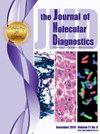Quantification of Measurable Residual Disease Detection by Next-Generation Sequencing–Based Clonality Testing in B-Cell and Plasma Cell Neoplasms
Abstract
Next-generation sequencing (NGS)–based measurable residual disease (MRD) monitoring in post-treatment settings can be crucial for relapse risk stratification in patients with B-cell and plasma cell neoplasms. Prior studies have focused on validation of various technical aspects of the MRD assays, but more studies are warranted to establish the performance characteristics and enable standardization and broad utilization in routine clinical practice. Here, the authors describe an NGS-based IGH MRD quantification assay, incorporating a spike-in calibrator for monitoring B-cell and plasma cell neoplasms based on their unique IGH rearrangement status. Comparison of MRD status (positive or undetectable) by NGS and flow cytometry (FC) assays showed high concordance (91%, 471/519 cases) and overall good linear correlation in MRD quantitation, particularly for chronic lymphocytic leukemia and B-lymphoblastic leukemia/lymphoma (R = 0.85). Quantitative correlation was lower for plasma cell neoplasms, where underestimation by FC is a known limitation. No significant effects on sequencing efficiency by the spike-in calibrator were observed, with excellent inter- and intra-assay reproducibility within the authors’ laboratory, and in comparison to an external laboratory, using the same assay and protocols. Assays performed both at internal and external laboratories showed highly concordant MRD detection (100%) and quantitation (R = 0.97). Overall, this NGS-based MRD assay showed highly reproducible results with quantitation that correlated well with FC MRD assessment, particularly for B-cell neoplasms.

 求助内容:
求助内容: 应助结果提醒方式:
应助结果提醒方式:


